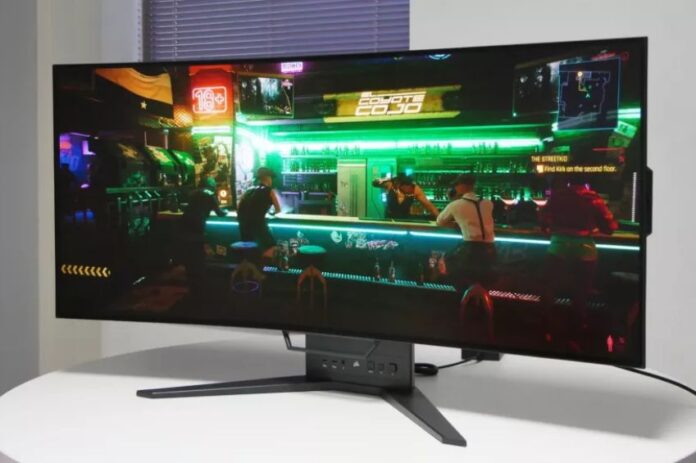Corsair Xeneon Flex Oled OLED technology makes many promises. But for PC gamers, it has so far terribly little to show for it. The fantastic 34-inch Alienware 34 AW3423DW is the only genuine OLED PC gaming monitor we’ve seen so far, as opposed to a thinly-disguised TV (opens in new tab). Up until now, when the new Corsair Xeneon Flex 45WQHD240 arrived.
Given that the new Xeneon Flex’s 45-inch ultrawide panel is a direct descendant of LG’s most recent TVs, right down to its WRGB sub-pixel structure as opposed to RGB, it is debatable if the device is strictly speaking a monitor. The comparatively low 84PPI pixel density and native resolution of 3,440 by 1,440 further conceal the panel technology’s TV origins. However, this is much more than just a TV that has been reboxed and given DisplayPort connectivity. Here, there is some pretty fascinating engineering at work.
To begin with, and contrary to what the Xeneon Flex moniker suggests, this OLED truly bends. The amount of curve can be manually adjusted to be entirely flat or as tight as an 800R curve. In contrast, the extremely curved Samsung Neo G9(opens in new tab) has a 1000R curvature that is just marginally less severe. This Corsair monitor is somewhat extreme when the curve is adjusted to maximum.
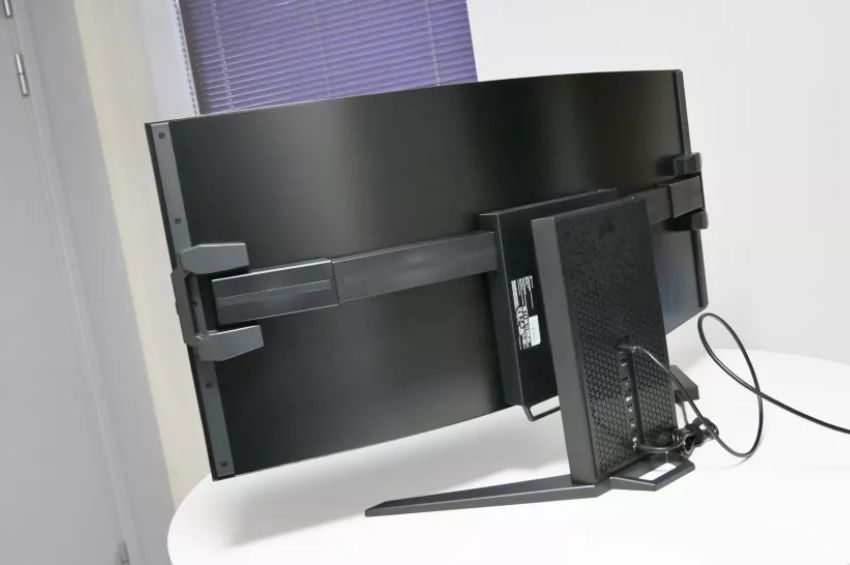
Corsair Xeneon Flex OLED
Other physical modifications are scarce, which is maybe not surprising given the complexity the flexible panel adds to the equation. There is no height or swivel available; just tilt is offered. Corsair rates the LG-supplied OLED panel at 1000 nits peak brightness and 150 nits whole screen, with 450 nits in a 25% window and 800 nits in a 10% window, in terms of more general characteristics.
The fundamental issue of brightness is a bit of a minefield with OLED technology, as those convoluted numbers suggest. OLED screens have no trouble turning up the brightness in tiny windows or across a small area of the entire display, as we recently explained(opens in new tab). However, larger items or full-screen brightness present significant power, heat, and burn-in risks. Because of this, OLED screens’ full-screen brightness ratings are often only a small portion of their maximum capacities.
In any case, speed is an area where the Corsair Xeneon Flex 45WQHD240 excels. The screen is far superior to any LCD monitor, with ratings of 0.03ms for GtG pixel response and 0.01 for full on-off response. The refresh rate peaks at 240Hz. The latter is undoubtedly enough for everyone, aside from semi-pro esports junkies.
The Xeneon Flex is expected to deliver excellent contrast and HDR performance, just like all OLED panels, which profit from per-pixel lighting and nearly perfect black levels. When it comes to HDR rendering, OLED technology is in fact fundamentally different from LCD, to the point where Corsair claims it is collaborating with Blur Busters and LG to develop a brand-new OLED Gaming Monitor certification standard that will score HDR performance.
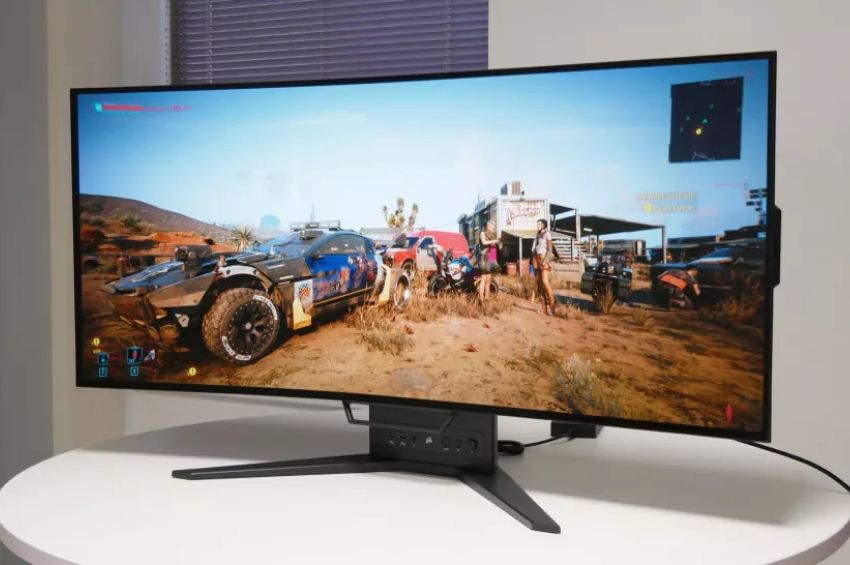
Burn-in is a concern with any OLED panel, but Corsair is quite encouraging in this regard. With its full-panel resolution of 3,456 by 1,456 pixels and other mitigation techniques, the screen can slightly skew the image. All of it is covered by a three-year Zero Burn in and Zero Dead Pixel Warranty from Corsair.
Finally, the Xeneon Flex has good connectivity when it comes to the primary speeds and feeds. In addition to four USB Type-A ports—two on the back and two on the front of the stand—dual HDMI 2.1 connectors, DisplayPort, USB Type-C with 90W power delivery, and DisplayPort are also included.
But how effective is it really? Any OLED panel used in a desktop gaming monitor is increasingly being questioned about its brightness. The Xeneon Flex has a very uneven performance in this area. It all relies on the type of displayed content.
Simply put, the Xeneon Flex performs poorly with brighter material. The full-screen brightness is subpar in my opinion. Running in HDR or SDR mode, brightly illuminated outdoor gaming scenarios appear very dreary. That’s disappointing given the extremely enthusiast price tag of this panel.
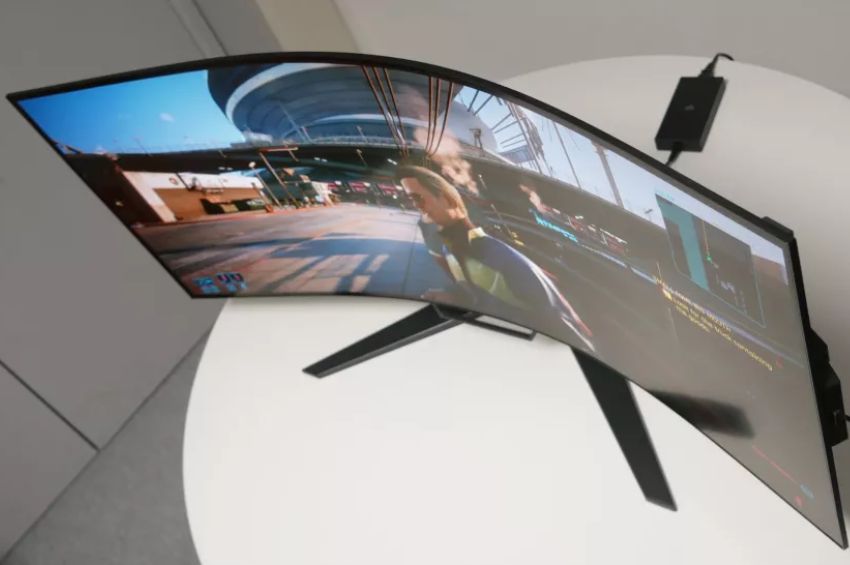
The OLED panel is far more capable of achieving something closer to the entire 1,000 nit peak claim with content that has dark backgrounds broken up by little, brilliant things. The outcomes can be quite beautiful when combined with the ideal dark levels and also a lack of any blooming.
The sombre bar scene in Cyberpunk 2077 is a wonderful example, since the neon signs behind the bar stand out against the room’s gloomy decor. The panel’s centre is considerably, but not dramatically, brighter than the sides even in this situation, which is the only catch.
The issue of pixel density is another. For a 45-inch panel, 3,440 by 1,440 is a very low resolution. This is especially important if the panel uses WRGB pixels as opposed to RGB ones, as the latter are necessary for the proper operation of sub-pixel text smoothing. To be honest, the text doesn’t appear as ugly as I could have anticipated. The pixel density is acceptable for games like shooters, racing sims, and what you may refer to as console-style gaming.
But it would be a grave error for you to spend $2,000 on this to play strategy games. The pixel density simply isn’t good enough for a device that can be used for both gaming and other PC tasks.
As I previously mentioned, speed is an area where the Corsair Xeneon Flex 45WQHD240 excels. A clear improvement over any LCD monitor is provided by the 240Hz refresh rate and the OLED pixel response. This device moves quite quickly.
However, once on the Windows desktop, the brightness restrictions are difficult to ignore. Simply put, the panel lacks zest and punch. ABL or automatic brightness limiter algorithms are used by the majority of big format OLED screens to change brightness based on how hard the panel is being driven. The Corsair’s ABL is undoubtedly rather aggressive, possibly as a result of the panel’s absence of a cooling.
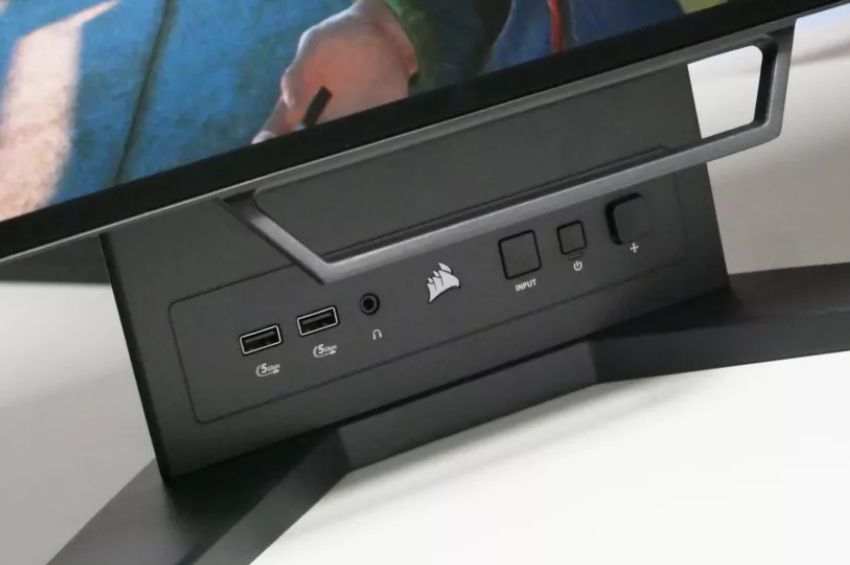
Given that heatsinks are increasingly being employed to enable the newest OLED TVs to reach improved large-object and full-screen brightness, that is a significant omission. It’s difficult to imagine how the flexible panel feature may work with a heatsink given the way it was designed. We would much rather have a flat panel or a fixed curve with a heatsink to enable better overall panel brightness if it is true that the flexible panel prevents the use of a panel heatsink.
This is especially true given how clumsy and unstable the flex feature feels. It can be challenging to determine how much to bend the panel when you modify the curve. The supporting adjustment arm is supposed to click at full bend, according to theory. In reality, it frequently clicks at random times. The creaking, cracking, and clicking will also frighten anyone with mechanical sympathy.
The Corsair Xeneon Flex 45WQHD240 has a fairly uneven performance overall. The relatively poor resolution and pixel density on their own are pretty hard to take at this pricing point. Therefore, the remainder of the encounter must be outstanding. Sadly, no, it isn’t.
In absolute terms, the full screen brightness is subpar and varies widely around the display. While presumably limiting the brightness accessible to some amount by forbidding the installation of a heatsink, the changeable panel contour doesn’t much improve the experience.

